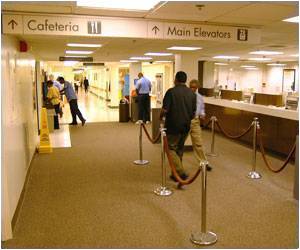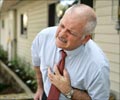Individuals experiencing increased noise levels from cars, trains, or planes were more likely to suffer a heart attack than individuals living in quieter areas.

‘Study attributes 1 in 20 heart attacks in New Jersey to noise from highways, trains and air traffic.’





The study analyzed heart attack rates among nearly 16,000 New Jersey residents hospitalized for a heart attack in 2018 using data from the MIDAS database, a repository of all cardiovascular hospitalizations in the state. The average daily transportation noise experienced at home was calculated using data from the state’s Bureau of Transportation Statistics. Patients were divided into those experiencing high levels of transportation noise (an average of 65 decibels or higher over the course of the day) and those with low noise exposure (a daily average of less than 50 decibels). A noise level of 65 decibels is similar to a loud conversation or laughter. Since noise levels were averaged over the course of the day, Moreyra said that many people may have experienced periods of relative quiet that were interrupted by louder bursts such as trucks, trains or aircraft going by.
Overall results found that 5% of hospitalizations for heart attacks were attributable to elevated high noise levels in the state. The heart attack rate was 72% higher in places with high transportation noise exposure, with these areas seeing 3,336 heart attacks per 100,000 people compared with 1,938 heart attacks per 100,000 people in quieter areas. Based on the relative rates of heart attack in different locations, the researchers calculated that high noise exposure accounted for about 1 in 20 heart attacks in the state.
The study is among the first to examine noise and heart disease in the U.S., but the findings align with several previous studies conducted in Europe. New Jersey is a state with many dense urban areas in close proximity to roadways, train lines and three major airports. Moreyra said other urban areas with similar infrastructure and transportation noise would likely see a similar pattern.
“As cardiologists, we are used to thinking about many traditional risk factors such as smoking, hypertension or diabetes,” Moreyra said. “This study and others suggest maybe we should start thinking about air pollution and noise pollution as additional risk factors for cardiovascular disease.”
Advertisement
Living near roadways and other transportation infrastructure also means greater exposure to vehicle exhaust and other forms of particulate air pollution. Previous studies have linked particulate air pollution with cardiovascular damage and increased rates of heart disease.
Advertisement
Researchers are beginning to disentangle those factors, but Moreyra said further research is needed to elucidate the effects of noise pollution on heart health.
The researchers did not attempt to account for demographic, socioeconomic or other health risk factors in their analysis, and they suggest further research could help tease apart the effect of noise pollution from these other factors. In addition, Moreyra said the study did not account for noise exposure at work or other locations. As a next step, the team plans to examine the data in more detail for insights into which sources of transportation noise may have the greatest health impact.
Moreyra said that a variety of policy interventions could help to reduce an individual’s exposure to transportation noise at home, even in urban areas. Examples include better enforcement of noise ordinances, infrastructure to block road noise, rules for air traffic, low-noise tires for vehicles and better noise insulation for buildings.
Source-Eurekalert















